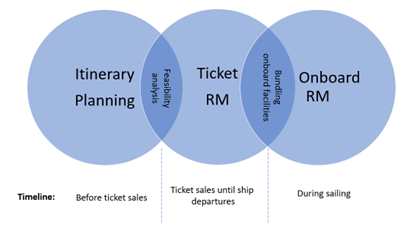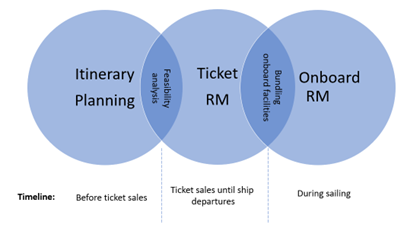Opening the Blackbox of Cruise Revenue Management (RM)

Revenue Management (RM) is all about maximising a company’s revenue. The evolution of RM originated from airline yield management and has become more important to many industries, including cruise lines.
Interestingly, the cruise occupancy calculation is very different from airlines and hotels in which the maximise occupancy is 100%; whereas cruise occupancy could exceed 100% (Royal Caribbean Blog, 2023). In 2023, Royal Caribbean occupancy was about 106% (Statista, 2024). This is mainly due to the calculation of berth instead of cabin (or room). The maximum capacity of the cruise ship also depends on the safety /lifeboat seat capacity that covers customers and crews/staff. If you remember the famous incident of ‘Titanic’. By all means, even if the number of berths or cabins is greater than the lifeboat seat capacity, the cruise company needs to stop selling due to SOLAS (Safety Of Life At Sea) regulations.
The question arises of how revenue management applies to the cruise industry when the price is all-inclusive?
Cruises are complex with the combination of transportation (typically itinerary travel between two to three ports), accommodation and artificial onboard activities (typically in mega ships). We first need to understand how cruises generate revenue which come from ticket sales and onboard revenue generation, plus understand how cruise RM functions and timelines.
Key findings from my recent research:
Cruise RM research remains relatively underdeveloped in academia. There is no paper illustrating how the RM activities and factors may impact the RM decisions, and so my research is the first paper to provide a holistic framework of the cruise RM cycles that covers both ticket and onboard revenues.
Three key functions of cruise RM were identified which are itinerary planning, ticket RM and onboard RM (as the diagram illustrates below), which all start at least 2 years before the cruise departs from the port.

There is no change in the RM cycles observed pre- and post-Covid-19 pandemic and across regions. While strategies or tactics may vary in response to local preferences, regulations, and environmental factors, the fundamental process of RM remains consistent.
There is a positive correlation between ticket and onboard revenues, as well as between pre-boarding and onboard revenues, influenced by consumer psychology. The concept of consumer psychology in spending goes beyond RM reference. The concept of the “second wallet” is related to mental budgeting which also refers to the behavioural economics concept. In practice, this could be related to the customer-centric or personalisation pricing strategies connecting to the marketing disciplines.
The key to maximising revenue is to know your customers’ preferences and the ways to communicate with them. In other words, it is about ‘marketing’ to enhance customers’ knowledge of the product value that helps to increase their purchase decision.
For more details and interesting findings, you may refer to my recent report “Cruise Revenue Navigator: Unveiling Cruise Revenue Management”.
And if you have any comments or questions, please do not hesitate to contact me directly at a.chu@napier.ac.uk. I look forward to exchanging knowledge with you.
Dr. Angela Chu
The Business School – Edinburgh Napier University